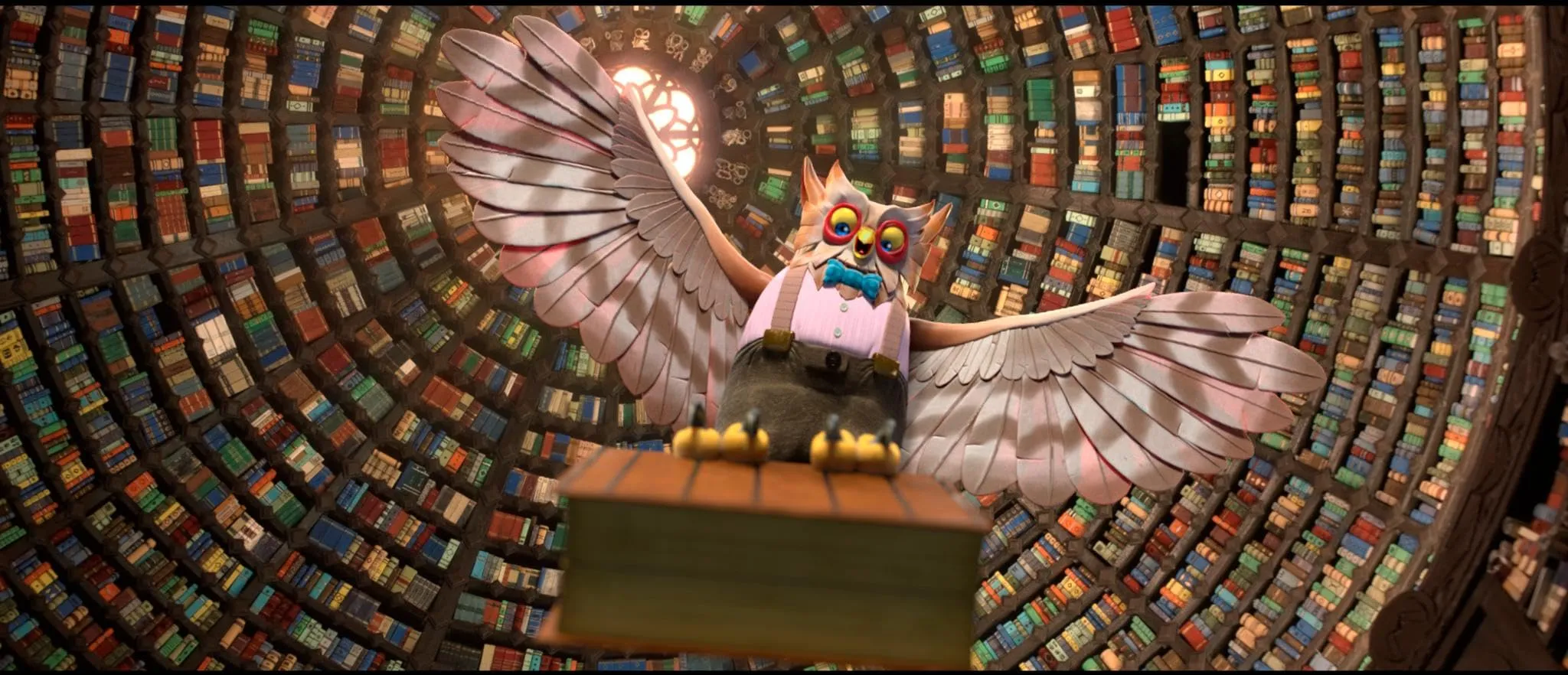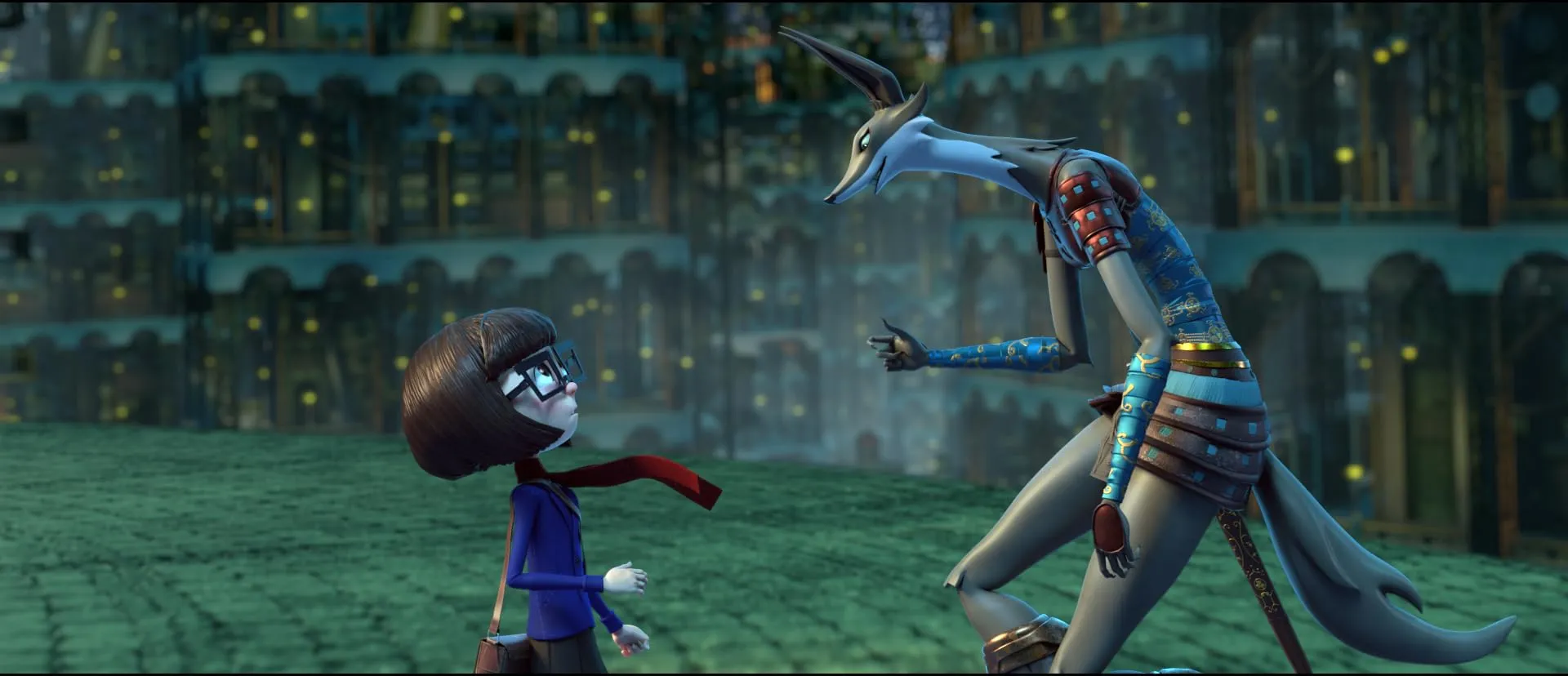What happens when a story, left abandoned, decides it is not finished with its author? The Argentine-Peruvian feature Dalia and the Red Book spins this fascinating question into a full-blown animated odyssey.
The film centers on Dalia, a thoughtful teenager who finds herself navigating life in the long shadow cast by her late father, an author of considerable renown. His legacy is both a comfort and a burden, a presence crystallized in his final, unfinished manuscript: a mysterious volume known as “The Red Book.” In a breathtaking turn of magical realism that feels at once classic and inventive, Dalia is physically torn from her world and plunged into the very pages of this incomplete narrative.
Within this literary dimension, the characters her father imagined are vibrantly alive, dangerously sentient, and desperately vying for control of the plot. Dalia’s only path back to reality requires her to do the one thing she fears most: pick up the pen and write an ending herself.
A Journey Through Grief and the Blank Page
The film’s fantastical premise is far more than a simple adventure; it functions as a powerful, symbolic vessel for its profound emotional core. Dalia’s perilous journey through a fictional world is a meticulously crafted allegory for her very real journey through grief.
The surreal, often illogical rules of the book—where landscapes can shift and characters act on narrative whim—perfectly mirror the disorienting and untethered state of mourning. This exploration of legacy and the pressure to live up to a parent’s name is a theme with deep global resonance. It particularly echoes the concept of parampara (tradition and lineage) found in many Indian narratives, where the heir to a family’s artistic or commercial dynasty faces the immense weight of expectation.
Dalia’s internal conflict, her crippling self-doubt and fear of the blank page, becomes a universal metaphor for the search for one’s own voice. The blankness represents not just creative paralysis but the daunting freedom that follows the loss of a guiding figure.
By forcing her to write, the story compels her to confront this fear, to process her loss, and to build her own identity separate from her father’s. The film wisely employs a thoughtful, deliberate pacing, a stark contrast to the relentless sensory stimulation of many modern family films. This allows the emotional beats to settle, giving weight to Dalia’s quiet struggle and eventual self-assertion.
A Striking and Experimental Animated Canvas
Visually, Dalia and the Red Book stands as a triumphant statement of artistic independence. Its aesthetic is a bold rejection of the polished, often uniform look of mainstream animation, opting instead for a rich and ambitious hybrid style.
The film masterfully combines the tangible, textured charm of stop-motion animation with the fluidity of CGI and the expressiveness of traditional 2D elements. This fusion creates a world that feels uniquely handcrafted and deeply immersive. The filmmakers’ use of Unreal Engine, a tool primarily associated with hyper-realistic video games, is a particularly noteworthy choice.
Its application here for a stylized, fantastical world signifies a blurring of lines between mediums and showcases how independent creators globally are harnessing new technologies to realize singular visions without big-studio budgets.
The world inside the book is a marvel of design, a surreal landscape tinged with a beautiful, dark fantasy atmosphere that feels both enchanting and perilous. The layered, richly textured environments—from forests of paper to structures seemingly built from language itself—are not passive backdrops.
They are active, breathing participants in the narrative, visually reinforcing the story’s imaginative and sometimes unsettling tone. In a cinematic landscape where independent animation, from India’s burgeoning scene to Latin America’s established voices, is pushing creative limits, this film’s distinctive artistry is a powerful and inspiring achievement.
Inhabitants of an Unfinished Story
The literary world Dalia enters is defined by its memorable inhabitants, each contributing to her profound transformation. Dalia’s own character arc is the film’s anchor, tracing her evolution from a hesitant girl, overwhelmed by her father’s reputation, into a self-assured young woman who literally seizes control of her own narrative.
Her journey is supported by her primary companion, Goat, a wonderfully realized character whose aviator goggles and stoic, humorless loyalty provide a perfect, grounding foil to Dalia’s emotional turmoil.
Even the film’s antagonists are treated with a refreshing complexity. Led by the determined Wolf, they are not portrayed as monolithically evil. Instead, they are driven by a relatable, almost tragic desire for purpose and resolution—they are incomplete beings searching for the wholeness of a finished story.
This adds a compelling layer to their conflict with Dalia. Regrettably, the film is severely hampered by its English-language dubbing. The voice work is distractingly flat and monotone, stripping the dialogue of the original language’s emotional inflection and cultural nuance.
An urgent line is delivered with the same placid tone as a simple observation, creating a jarring emotional distance that severs the audience’s connection to the characters’ plight. It is a technical flaw that undermines the otherwise superb artistry, a stark reminder that authenticity in performance is essential to the heart of any story.
Dalia and the Red Book premiered at the Annecy International Animation Film Festival and later screened at multiple festivals worldwide. It became available to stream in North America on various platforms in 2024 and can currently be rented or purchased on Apple TV, Amazon Prime Video, and Google Play.
Full Credits
Director: David Bisbano
Writers: David Bisbano, Rosana Zanetti
Producers and Executive Producers: Liliana Romero, David Bisbano, Ezequiel González, Roxana Rotundo, Walter Tournier
Cast: Natalia Rosminati, Anita Pauls, Cecilia Gispert, Marcos Rauch, Ricardo Alanis, Mónica Villa
Director of Photography (Cinematographer): Mariano Suárez
Editors: Cesar Custodio
Composer: Pablo Borghi
The Review
Dalia and the Red Book
Dalia and the Red Book is a visually spectacular and emotionally resonant film that triumphs in its artistic ambition. Its heartfelt story of navigating grief through creativity is both powerful and profound. While the stunning hybrid animation creates a world you want to get lost in, the flat and lifeless English-language dubbing creates an unfortunate emotional distance. It's a beautiful piece of cinema that truly deserved a better voice.
PROS
- A stunning and unique animation style blending multiple techniques.
- A deep and moving story about grief, legacy, and self-discovery.
- Imaginative and surreal world-building.
- Nuanced characters with complex motivations.
CONS
- The English-language dub is emotionally flat and detracts from the performances.

















































